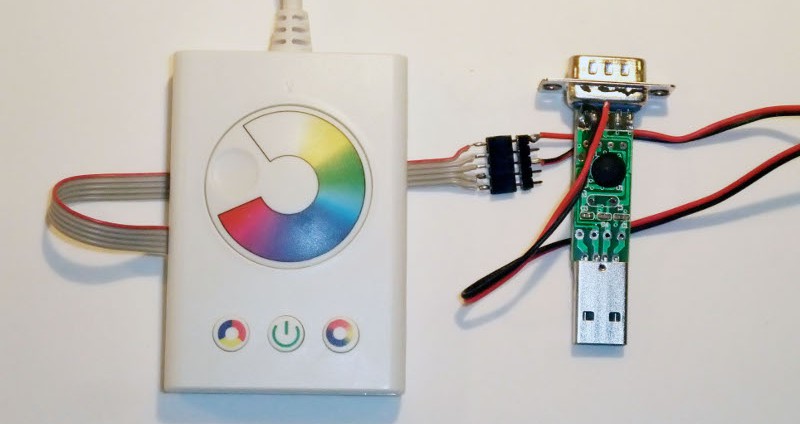There are a lot of hacks out there for Ikea’s Dioder LED light set. [Lambertus] wanted to create an easy and affordable ambilight while keeping the hardware modifications to a minimum. He also wanted anyone to be able to easily duplicate his work. He recently wrote in to share his successful solution.
The customizations boil down to three main steps: solder the ICSP connector wires to the test points on the Dioder PCB, connect a PIC programmer to the ICSP port (and reprogram), and attach a 5V RS-232 device to the ICSP port. The software was the most difficult part of the procedure for [Lambertus]. The PIC16F684 didn’t contain the required UART and PWM controllers, so he had to get crafty. Fortunately he’s done all the work for us, and lists the necessary .hex file he created on his site.
By adding support to boblight, his new ambilight is working with his media center very nicely. There’s a little demo video after the break.
















I’ve seen a few of these DIY ambilight hacks and the one thing I can’t figure out is how the light knows what colors to display. Is there an HDMI passthrough or something I’m missing or can they only be driven by playing back video on a computer?
I’ve done a bit more research. It looks like I’m looking for something along the lines of https://www.adafruit.com/blog/2012/11/04/ambipi-ambilight-clone-raspberrypi-raspberry_pi/
It can be a few things.
I’m driving my RGB strip right now using 3 PWM outputs through a couple of MOSFETs. You can either intercept the signal or use a few photoresistors with colour filters to “guess” the average colour.
The Leds are controled by a software on the computer that read image data from the screen or the video player.
I does not work without a PC as video source
This thing seems way overcomplicated to me – why not just stick a DVI-VGA adapter on the spare (mirrored) output on the gfx card and just amplify the RGB to drive the LEDs?
Well for one…it still leaves the PC as the only viable video source.
i guess but that seems to be the case here anyway. Besides, it sems like any component output would work. Hell, you might even drive an RGB LED directly off a scart socket, no need to worry about integrating each field – your eyes`ll do that for you just fine.
Of course it`s `Pi and chips` with everything these days – seems like `circuit design` is gradually starting to mean `writing code` :o)
could this be done with the old version of the IKEA dioder? or does anyone has a link to the old DIODER (not the 3 buttons one) ?